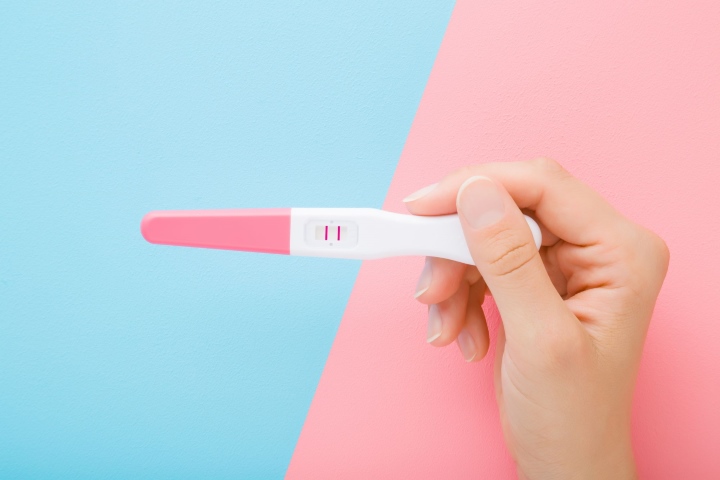Fertility is the ability to give birth to offspring, whereas infertility is the failure to achieve clinical pregnancy after 12 months of unprotected sexual intercourse. So to know whether you are fertile or infertile, you can look for signs and changes in your body during the menstrual cycle.
In This Article:
- Early Signs of Infertility
- Are Regular Periods a Sign of Fertility?
- Days after your Period, are you Most Fertile?
- Signs that you are Fertile
- Other Signs
All You Need to Know about Signs that You are Fertile
Early Signs of Infertility
- Irregular periods– In general a menstrual cycle is of 28 days on average. It may be slightly longer or shorter but it usually repeats itself on a regular interval. But sometimes the cycle’s day may vary very much making it difficult to predict the next period. Such irregularities may be a sign of an underlying problem in hormonal levels or function of uterus and ovaries and may lead to infertility.
- Dysmennorhea – painful periods, severe cramps during bleeding
- Amenorrhea – (absence of periods) It’s not uncommon for women to have an off month here and there. Periods might temporarily disappear under stress or heavy workout but if you haven’t had a period in months, it’s time to get your fertility checked.
- Symptoms of hormonal fluctuations such as reduced sexual drive, skin changes, facial hair growth, reduced bone density.
Are Regular Periods a Sign of Fertility?
Fertility is not determined by regular menstrual bleeding ,it is determined by release of egg during ovulation. A regular period which is not accompanied with ovulation is infertile i.e. anovulatory cycles with normal periods are infertile.
So without the release of eggs from ovaries, conception/pregnancy cannot occur, hence regular periods are not confirmatory of fertility.
Days After Your Period, Are You Most Fertile?
Chances of conceiving are greatest during fertile window – which includes the day of ovulation and 5 days beforehand.
Day of ovulation can be predicted by deducting 14 days from the day of your next period. But average days of your periods need to be calculated. The first day of bleeding of period is taken as Day 1 of your cycle. Add your average cycle days in it and deduct 14 days from it, you will get the date of your next ovulation.
Eg. Say you started bleeding on 24th May and your average cycle is of 29 days. So 22ndof June becomes your next period, then your ovulation will most probably occur on 8th of June, therefore your fertile window is from 3rd – 8th of June.
Signs that you are Fertile
Your body goes through changes under the influence of hormones during a menstrual cycle. These changes can be analysed to predict your fertile window. The changes are subtle and need very delicate sense to differentiate between normal and ovulatory phase.
Changes in Basal Body Temperature
During ovulation, under the influence of progesterone, secreted by the corpus luteum ( remnant of mature graffian follicle after release of egg), the temperature of the body rises by 0.5 -1 °C. The temperature should be taken every morning just after waking up without doing any activity. It may take sometimes for you to see the subtle changes in temperature. You will have to plot the daily basal temperature on a chart and look for the rise.
Changes in Cervical Fluid
Cervical mucus is the fluid secreted by the cervix under the influence of estrogen. As the levels of estrogen vary during a menstrual cycle, the consistency and amount of cervical fluid vary during a menstrual cycle.
These changes can be used to predict the fertile window of your menstrual cycle.
Cervical fluid during ovulation becomes clear and stretchy having consistency of raw egg white.
Changes in Position and Firmness of Cervix
Most of the body organs go through different changes during the menstrual cycle, mainly reproductive including ovaries, uterus, cervix and vagina. During ovulation cervix goes through changes in its position and firmness to allow easier passage to sperm after intercourse. These changes can be detected if regular examination of cervix is done.
During ovulation, the cervix moves higher up in position, becomes softer, opens up in diameter and becomes more wet.
It will take some time before you can differentiate between normal cervix and cervix during ovulation.
Breast or Nipple Tenderness
In the days leading up to and before ovulation, breast and nipple may have soreness and increased sensitivity under the influence of increased estrogen levels.
Pelvic Pain / Mittelschmerz
Pain on one side of the pelvis during ovulation is seen around 20% women . Usually it is on the side of the ovary from which egg is released. But it should not be taken as definite sign of ovulation. It is also known as Mittelschmerz.
Increased Sexual Drive
- Heightened sexual drive is associated with increased estrogen levels during ovulation.
- But increased feeling of sexual drive may be associated with other factors too, and is not a sure sign of ovulation.
- Also sexual drive may be reduced during ovulation due to many other factors such as stress, anorexia.
Other Signs
- Light spotting – it occurs due to increased estrogen levels which cause uterine hyperplasia but due to insufficient progesterone levels, it may cause some little bleeding appearing as spots.
- Slight cramping or pain on one side of the pelvis
- Heightened sense of smell, taste and vision.
- https://www.ncbi.nlm.nih.gov/pmc/articles/PMC9171018/
- https://www.ncbi.nlm.nih.gov/pmc/articles/PMC5689497/
